Today steel plays a decisive role in the construction of a football stadium. It is an irreplaceable material at the heart of creating the most ambitious and innovative projects. Steel not only ensures the strength of the structures, but also their long-lasting beauty. We have selected unique stadiums from around the world that deserve attention.
Michigan Stadium, USA

The 1920s are often referred to as the golden age of college football in the United States. It was then that the boom began in the construction of stadiums at colleges and universities. The history of this classic stadium, also known as the ‘Big House’, dates back to 1927. Then the new Michigan Stadium capacity was 82,000. An interesting fact is that, until 1968, women and children were not allowed on the field. But a lot has changed since then.
Over the years, the popularity of team sports has grown, and since 1975, the stadium has attracted at least 100,000 fans per game. In 2010, this oldest and largest football arena in the United States, the symbol of the University of Michigan, was renovated. The Douglas Steel company won a tender to manufacture and erect over 2,400 tonnes of structural steel for indoor halls, luxury suites and press boxes on the west side of the stadium. Now the capacity of the Big House is 109,900. It hosts team sports matches and graduation ceremonies. The stadium is the largest in the United States and the third largest in the world.
University of Phoenix Stadium, USA
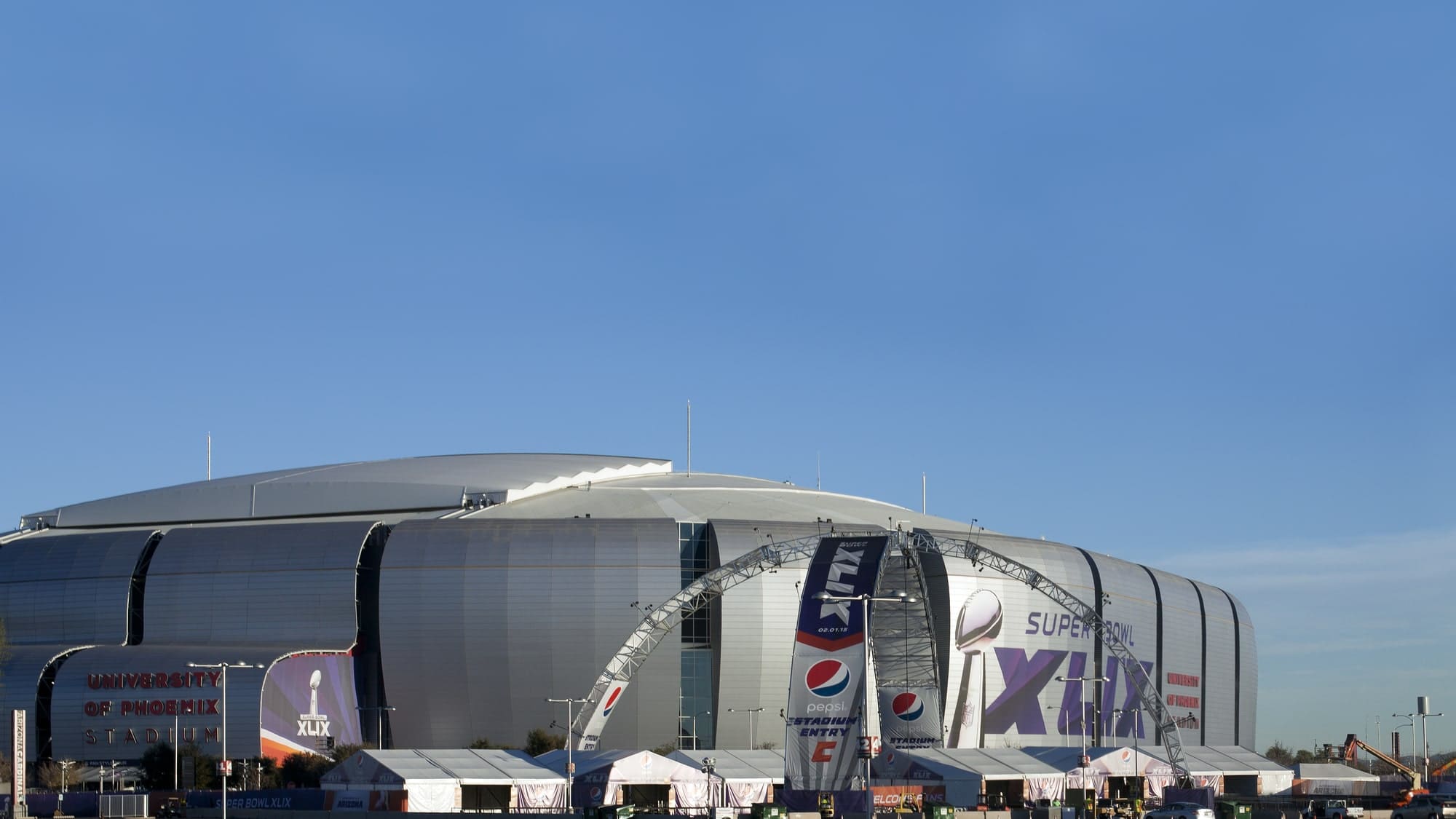
This stadium in the state capital of Arizona is a prime example of the use of complex engineering solutions, new technologies and unusual design approaches. The stadium was opened in 2006. Its capacity is 63,400 spectators, and for large-scale events the number of seats can be increased to 73,000. Thanks to the innovative approach to the design of this sports facility, athletes, fans, performers and spectators enjoy sporting events to the fullest. This stadium is a universal facility with a unique retractable steel roof and field that can be removed from the arena if required. The field moves on 546 steel wheels that travel on 13 parallel steel rails and travel 225 meters in 70 minutes. And this is all done with the press of a single button. An incredible machine. In the meantime, the natural grass receives a portion of sunlight. The stadium is also used for competitions in motorsport, for concerts, fairs, exhibitions or corporate events.
At the same time, the grass playing surface is not damaged at all.
Finding a solution for controlling the convertible, tilted roof was a very difficult process. The designers have created a 480-horsepower structure that moves the roof panels and maintains control over them while moving. Made from translucent Bird-Air fabric and running on steel rails, this structure includes eight winches that move the panels. Each winch is in turn powered by four 7.5 horsepower motors that wind the cable.
The stadium's exterior is made of shimmering metal panels that reflect sunlight, while glass inserts in the walls allow for stunning views. The huge stadium offers a variety of allocation options, including premium spaces, 88 lofts and 7,505 club seats.
Allianz Arena, Germany

One of the most modern stadiums in Europe, the Allianz Arena, commissioned in 2005, is located in Munich. This is the third home stadium of FC Bayern Munich. Its capacity is 75,000 seats, including business and VIP boxes, as well as seats for the disabled. About 22,000 tonnes of steel were used to build the facility, most of which went into the sliding roof. The arena is often called an inflatable boat or a car tyre, since its facade and roof are made up of airbags - there are about 3,000 of them. The installation of new LED lighting on the facade began in October 2014. The old technology has been replaced by a fully digital system of LED lamps connected in a network controlled by intelligent software.
The new lighting system is durable and energy efficient. It is able to withstand the most difficult weather conditions. The project was completed in just over three months. Thanks to the new system, Allianz Arena has become the first and largest stadium in Europe with outdoor LED lighting. Instead of three colours - red, white and blue - that were used until 2014, the new lighting system reproduces up to 16 million different colours and shades, offering a wide variety of colour nuances and mixes. The illumination of the stadium is so powerful and bright that the Allianz Arena can be seen at night from the Alps, about a distance of at least 75 kilometres.
Allianz Arena has a well-developed infrastructure. There is a large parking lot, restaurants, a business club, a press centre, offices and conference rooms, a children's centre, ticket offices, a shop, the Bayern Munich football club museum, changing rooms, training rooms and more than 750 screens.
Wembley Stadium, Great Britain
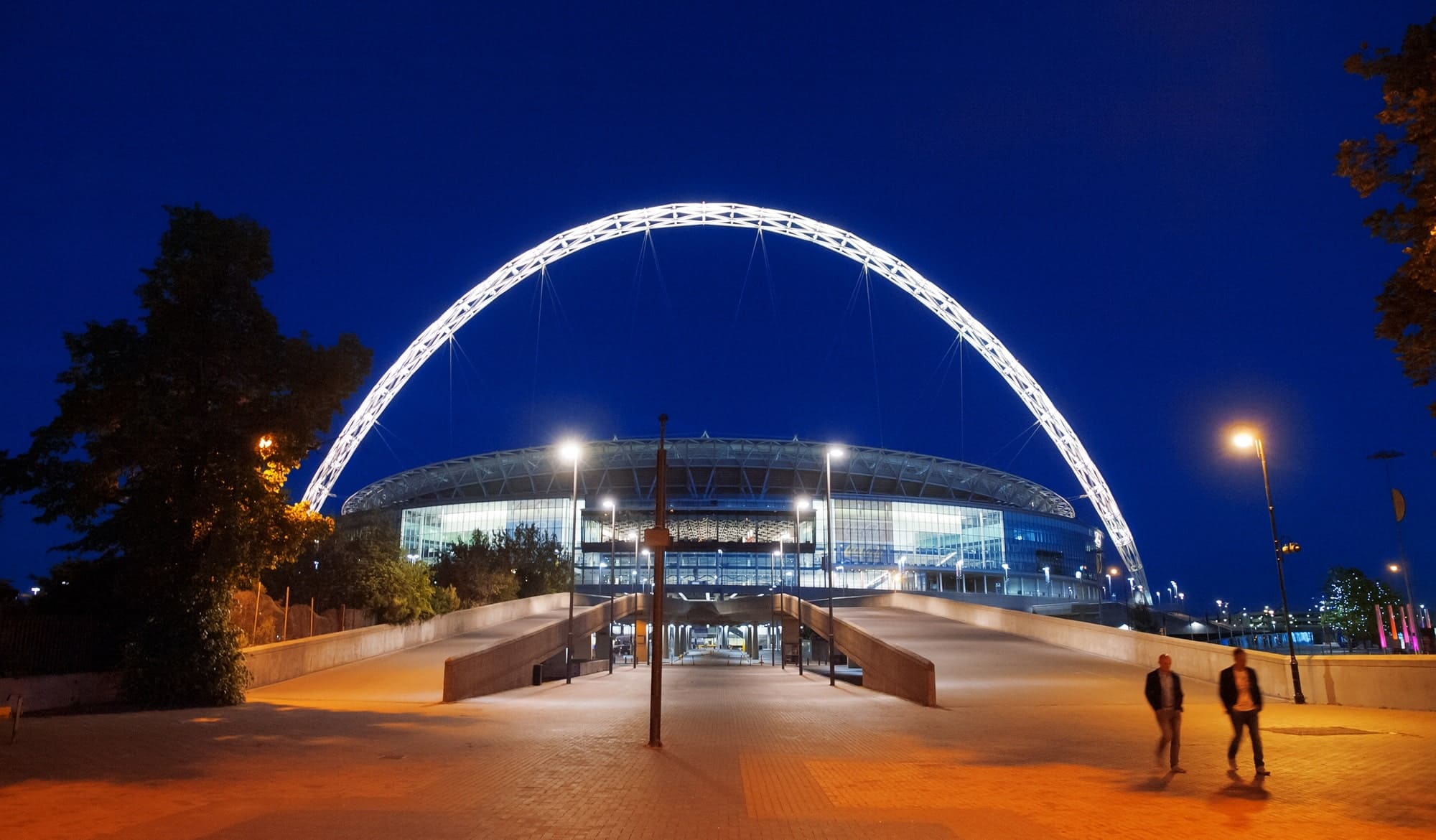
The second largest in Europe and the UK's largest modern football stadium at Wembley Park in London, with a capacity of 90,000, Wembley Stadium is renowned for hosting major national and international matches and opened after a renovation in 2007. Wembley has a retractable steel roof and such striking features as arches with a height of 133 metres. The diameter of the arch is 7.4 metres, which is enough to accommodate a train inside, and the arch span is 315 metres, making it the longest single-span structure in the world. This arch can be seen almost from anywhere in London.
Since the 1880s, football and cricket matches have been held on this site, and in 1923, a stadium was opened here, which existed until its reconstruction. Since its inception, the stadium has been used to host the 1948 Summer Olympics, World Speedway Championships, rugby matches, American and Gaelic football and dog racing. For the reconstruction of Wembley, around 23,000 tonnes of steel were used. The new stadium is twice the size of its predecessor. Notably, the stadium is designed in such a way that no shadow falls on the field at all, and thanks to the arch, the need for columns that hindered the view of the audience disappeared.
Wembley Stadium is a landmark in London, which legendary football player Pele called the cathedral of football. It is not just important for sports fans. Wembley is also a concert venue for many world-class stars, as well as a location for rallies and various kinds of events.
The Olympic National Sports Complex
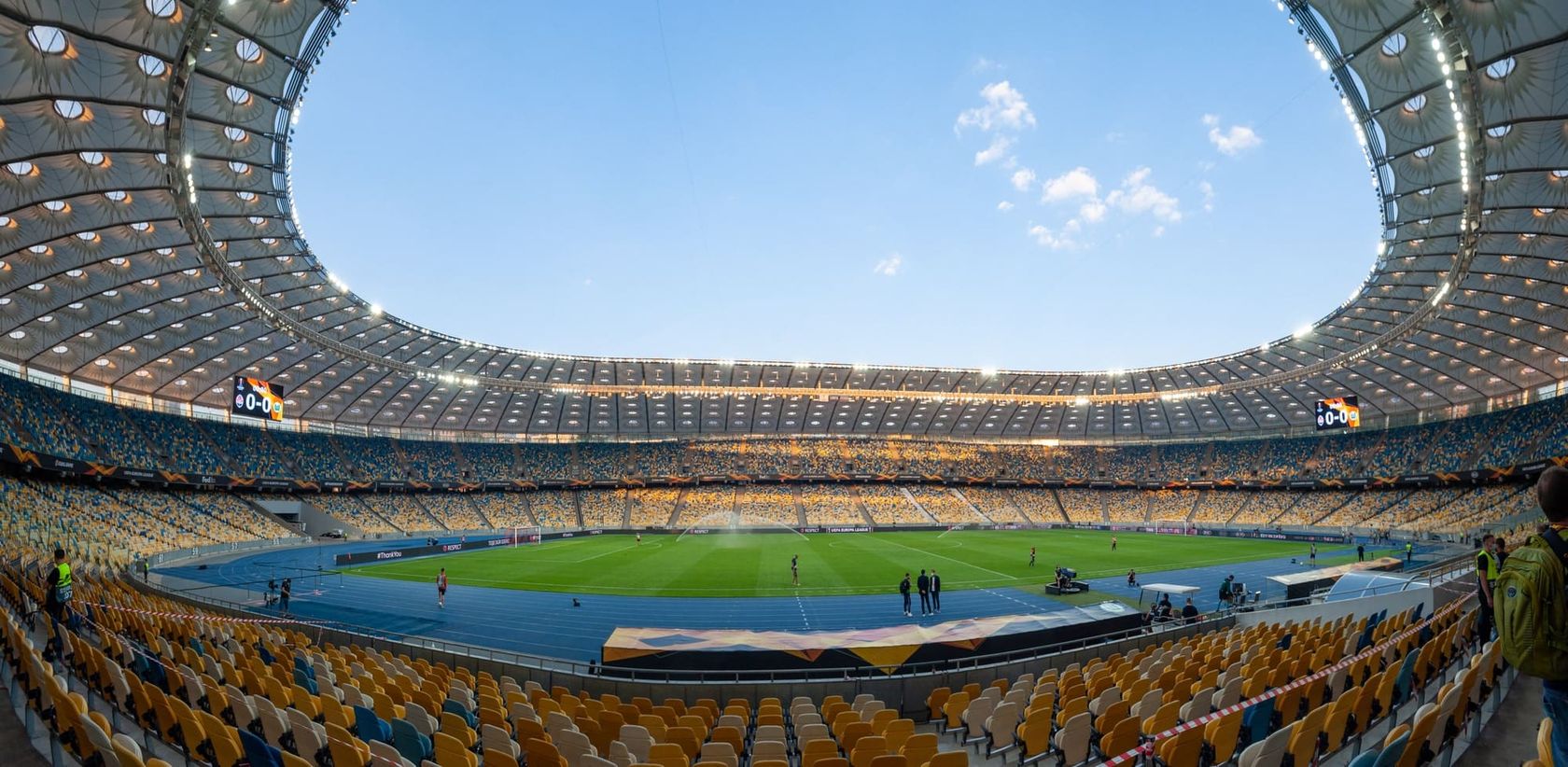
The Olympic National Sports Complex is located in the very heart of Kyiv and it’s Ukraine’s main sports and cultural arena.
The stadium appeared back in 1923, when the first Olympics of the Kyiv region were held here. Since 1925, the stadium has hosted city and international championship matches. In 1928, in celebration of the Day of the Athlete, 2,000 local athletes created a bright and giant monument in the form of a five-pointed star. In 1936, a large-scale reconstruction of the stadium began, and, over five years of construction, a football arena with seats for 50,000 spectators and a sports pavilion grew. The stadium was surrounded by a wide maple alley, and nearby were volleyball, tennis and basketball courts. The infrastructure was complemented by pavilions for Kyiv residents, located on the slopes of the mountain. The Republican stadium was planned to be ceremonially opened in 1941, but the war prevented these plans, and the opening took place three years later, in June 1944. After the war, work on improving the stadium continued for decades. And, in 1980, Olympic football matches took place there.
The most recent reconstruction of The Olympic National Sports Complex began in 2008, when Ukraine was preparing to host the final part of the 2012 European Football Championship at the stadium. The reconstruction of the country's main sports arena and one of the largest stadiums in Europe was carried out using the latest technologies and with the involvement of highly qualified experts. A natural lawn, fireproof seats, vacuum sewerage system and unique roof were installed – and this is not the complete list of the arena's innovations.
It should be noted that 2,000 tonnes of steel supplied by Metinvest Group was used for the construction of a heavy-duty roof with transparent domes, as well as for other stadium structures. Now the stadium has a capacity of 70,050 seats.
Since 2011, the stadium has hosted more than 200 football matches as part of Euro 2012, the Europa League, and the UEFA Champions League as well as qualifications for the European Championship and the World Cup and the Ukrainian Premier League. The Olympic National Sports Complex is also a huge concert venue that welcomes Ukrainian and world musicians.
Notably, numerous records have been set at the stadium, recorded by the National Register of Records of Ukraine. For example, the largest 3D drawing on a plane was created here, and the loudest performance of the anthem of Ukraine was also recorded at this stadium.
Beijing National Stadium, PRC
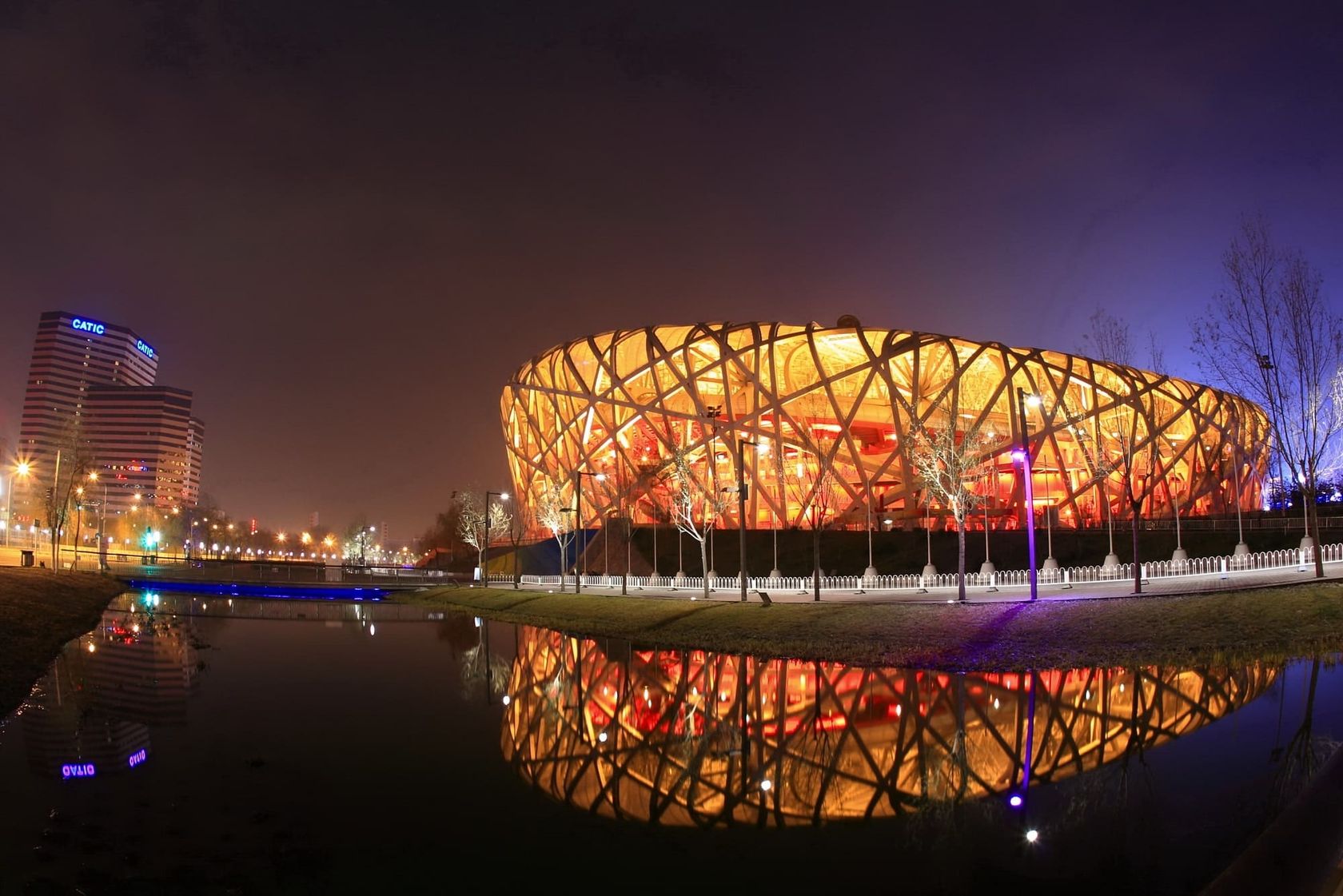
The 91,000-seat stadium has been designed to reflect elements of Chinese art and culture. The shape of the stadium is reminiscent of Chinese ceramics and made in the form of a bird's nest. The twisted steel sections that form the roof clearly emphasise this authentic idea.
The ‘Bird's Nest’ stadium is considered one of the largest sports structures in the world - the total weight of materials, including reinforced concrete elements, is 110,000 tonnes.
The main stadium has been built as a huge steel ellipse weighing 42,000 tonnes. Steel work was a very important part of the construction. Since Beijing is located in an earthquake-prone area, the architects had to take into account earthquake resistance as well. Steel with a minimum amount of impurities, produced by the largest metallurgical holding in China, allowed the designers to combine light weight and strength, and thus provide maximum resistance to seismic effects.
The stadium stands are located on reinforced concrete structures inside the Bird's Nest. The stadium has 11,000 removable seats. Despite the enormous scale of the facility, one gets the impression of its extraordinary lightness. This is due to the fact that the external and internal structures of the stadium seem to be separated from each other. The Bird's Nest is covered with a rainproof polymer material that flawlessly transmits sunlight, and the use of sound-absorbing materials allows spectators from anywhere in the stadium to hear the broadcast of a match or concert with high fidelity. Truly, it’s a unique structure and architectural wonder.
Today, the Beijing National Stadium is a space for sporting events, concerts and festivals. The next highly anticipated event to take place here will be the opening ceremony of the 2022 Winter Olympics. After the 2008 Summer Olympics, The Bird's Nest will once again witness Olympic competition.
Floating Stadium in Marina Bay, Singapore
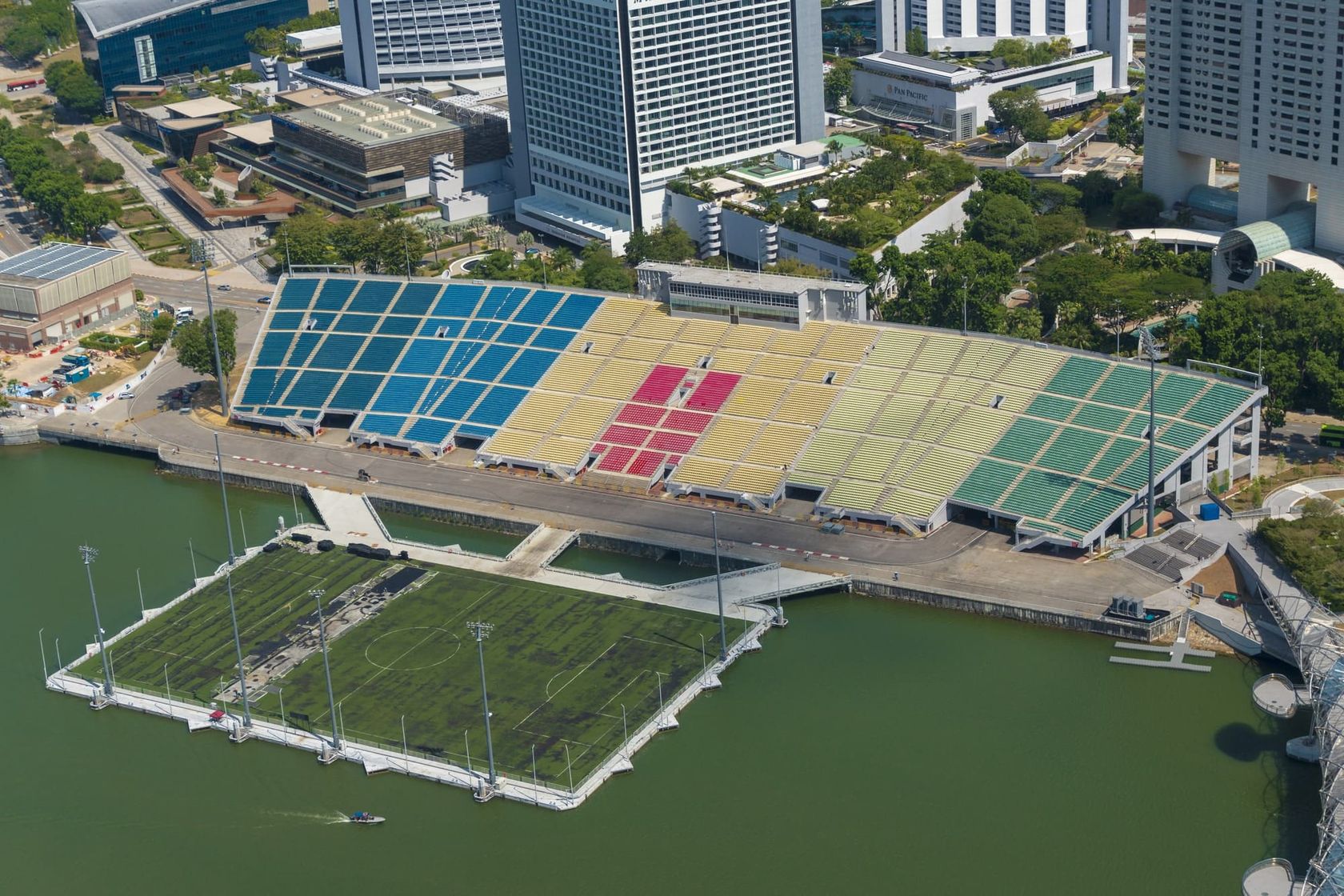
This unusual stadium was built in 2007. Its frame is made of a steel structure and pontoons. The foundation of the platform is made up of six pylons attached to the seabed. Made entirely of steel, this is the largest floating stage in the world and can accommodate 9,000 people, while the shore stands have 30,000 seats. The platform has rarely been used for football matches. It is mainly a place for concerts, social events, exhibitions, water shows. The internal drainage system and lightning rods are quite important design features. The platform can be moved if necessary. For example, it is removed when various kinds of water competitions are held in the bay. This floating stadium was originally conceived as a temporary structure. But, apparently, nothing is more permanent than temporary, and there are already plans to make the platform the main permanent location for national parades.
Sports stadiums today are symbols of their cities, examples of trends in architecture and design, and the embodiment of new technologies. For a number of reasons, steel is an ideal material for the construction of buildings, stadiums, bridges and various large structures. For example, objects from metal structures can be made outside of the construction site. Afterwards, they simply need to be correctly assembled and positioned on site. The fabrication process is quite fast, the assembly of the finished structural elements on the construction site is easy, which significantly reduces the construction time. In addition, the modules made of structural steel are very durable yet flexible enough, which means freedom of design and the uniqueness of the object. Another important advantage in the use of steel in construction is the possibility of expanding the object in height or width due to additional steel modules. Therefore, in the future, if necessary, it will be relatively easy to modify an already built facility. It remains only to admire the beauty and reliability of the unique steel structures, including the world’s majestic stadiums.
